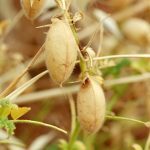Tag Archives Crop Development Centre

Wheat breeding produces big results
Canadian varietal development system called a success story

University of Saskatchewan expands agricultural research facilities
University of Saskatchewan’s plant growth and soil science facilities will centralize and increase their research capabilities

Blockbuster oat variety on the horizon
A new and yet-to-be named high-yielding oat variety was developed using traditional plant breeding methods

Saskatchewan Pulse Growers, Crop Development Centre close to new deal

Chickpea acres prepare to mount a comeback

From AIM: New report drops numbers on plant breeding ROI

Increasing flax yields faces genetic challenges
Researchers who want to optimize flax for seed production must backtrack on 8,000 years of agricultural development
SASKATOON — When Bunyamin Tar’an introduced a new flax variety, CDC Esme, to an audience of farmers, the question from the floor was immediate: what about the straw? “Similar to (CDC) Glas,” he said. “Almost all the plants have similar structure. A lot of the challenge with flax is that the straw is really, really […] Read more
Pulse growers navigate a fork in seed road

Variety use agreements prompt spirited debate

Pulse growers want trailing royalty decision re-opened
Debate becomes heated as farmers question funding agreement with Limagrain that includes variety use agreements
SASKATOON — A resolution that would have undermined Saskatchewan Pulse Growers’ new breeding agreement with Limagrain was narrowly defeated at the organization’s annual general meeting. It called for pulse varieties funded by SaskPulse levy payers to have no variety use agreements (VUAs). The resolution submitted by the National Farmers Union received a 47 percent yes […] Read more




